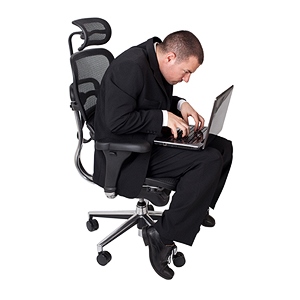 You’re all dressed up and ready to go out to work. Or a night on the town. Or on a fancy dinner date. And you’re wearing the one accessory that pulls the entire look together – your high heels that give you that long, lean, leggy look. Nice. However, at what cost to your health?
You’re all dressed up and ready to go out to work. Or a night on the town. Or on a fancy dinner date. And you’re wearing the one accessory that pulls the entire look together – your high heels that give you that long, lean, leggy look. Nice. However, at what cost to your health?
The wearing of high-heeled shoes is a prime example of women inviting foot problems. Doctors of podiatric medicine see no value in high heels (generally defined as pumps with heels of more than two inches). They believe them to be biomechanically and orthopedically unsound, citing medical, postural, and safety faults of such heels.
They know, for example, that high heels may contribute to knee and back problems, disabling injuries in falls, shortened calf muscles, and an awkward, unnatural gait. In time, high heels may cause enough changes in the feet to impair their proper function. Most women admit high heels make their feet hurt, but they tolerate the discomfort in order to look taller, stylish, and more professional. In a Gallup Poll, 37 percent of the women surveyed said they would continue to wear high heels, even though they did not think them comfortable.”
Heels force the thigh muscles to work harder, putting extra strain on the knee joint and tendon that runs from the knee cap to the thigh bone. Compared with walking barefoot, high heels increase the pressure on the inside of the knee by 26 percent. Over time, this increased pressure on the knee can lead to osteoarthritis.”
Osteoarthritis is the most common form of arthritis, and it’s twice as common in women. “The use of heels is a likely reason,” Kerrigan speculates. “Just wear flats,” Harvard researcher D. Casey Kerrigan, MD, an associate professor of physical medicine and rehabilitation, tells WebMD. “I am strongly against wearing heels at all,” says Kerrigan, who never wears them.” Throw them out,” she says, adding that women shouldn’t be victims of fashion.
And what about back pain? Think about it, high heels tilt your entire foot forward, increasing the normal forward curve of your back and causing your pelvis to tilt forward. Essentially, wearing high heels throws your entire body off its center of gravity and, therefore, off balance. Think of the long-term effect this has on your body if you wear heels to work each day and then go out at night!
“According to the American Orthopaedic Foot and Ankle Society, people take an average of 10,000 steps a day. High heels shift the force of each of those steps so that the most pressure ends up on the ball of the foot and on the bones at the base of the toes. (If you wear flats, the entire foot would absorb this impact.) A 3-inch heel — most experts consider a heel “high” at 2 inches or more — creates three to six times more stress on the front of the foot than a shoe with a modest one-inch heel.
As a result, heels can lead to bunions, heel pain, toe deformities, shortened Achilles tendons, and trapped nerves. In fact, women account for about 90% of the nearly 800,000 operations each year for bunions, hammertoes (a permanent deformity of the toe joint in which the toe bends up slightly and then curls downward, resting on its tip), and trapped nerves, and most of these surgeries can be linked back to their high-heeled shoe choice.
The problems can travel upward, too. The ankle, knee, and hip joints can all suffer from your footwear preferences. When you walk in flats, the muscles of the leg and thigh have an opportunity to contract as well as to stretch out. However, when wearing your high-heeled shoes, the foot is held in a downward position as you walk. This keeps the knee, hip, and low back in a somewhat flexed position, which prevents the muscles that cross the backside of these joints to stretch out as they normally would. Over time, this can lead to stiffness, pain, and injury. High heels can also cause lower back strain, because the heel causes your body to pitch forward more than normal, putting excess pressure on the back.”
 Dr. Gerard Clum, president of Life West College of Chiropractic and spokesperson for the Foundation for Chiropractic Progress, states that the “dangers associated with wearing high heels affect the entire body, particularly the knee, hip, and back. The abnormal weight-bearing and stressful posture induced by high heels can strain both the low back and the neck, not to mention the foot, ankle and knee.”
Dr. Gerard Clum, president of Life West College of Chiropractic and spokesperson for the Foundation for Chiropractic Progress, states that the “dangers associated with wearing high heels affect the entire body, particularly the knee, hip, and back. The abnormal weight-bearing and stressful posture induced by high heels can strain both the low back and the neck, not to mention the foot, ankle and knee.”
The Foundation for Chiropractic Progress has issued the following recommendations for women who wear high heels:
• Don’t wear high heels more than two hours a day. If you must wear heels, carry a pair of flat shoes to change into.
• Compromise heel height to less than two inches.
• Walk to work in your running shoes and change into your heels at work.
• If the increase in height is what you are after, try using platforms.
• Choose a shoe with a wider toe box (as opposed to a pointed toe), and one with padding across the ball of the foot. The positioning of the heel should be more towards the back of the heel which adds more stability as opposed to oriented towards the middle of the foot.
• If you are planning to be more active when you are heading out for the night, such as dancing or walking, plan your shoes accordingly.
If you’ve been wearing heels for years, you’ve probably already experienced some of their negative effects such as back or neck pain, joint pain or foot problems, Chiropractic care can certainly help to address some of the detrimental spinal effects of wearing high heels. But, if you really want to make a difference, then the rest is up to you.
Chiropractors are well- known for helping patients overcome the problems and pain associated with wearing high heels. Start with calling our office to schedule yourself, or someone you know, in for a check up appointment to see what treatment options are available to you. You’ll be glad you did!





